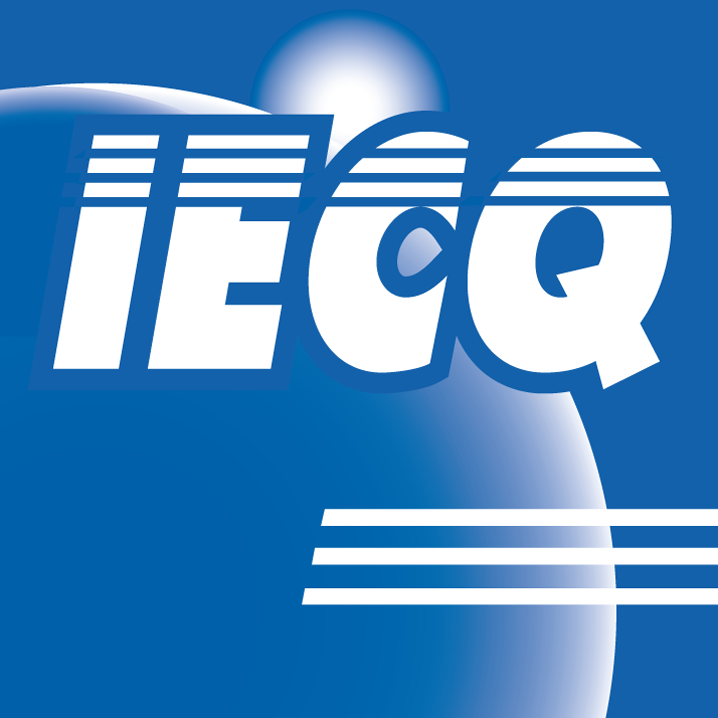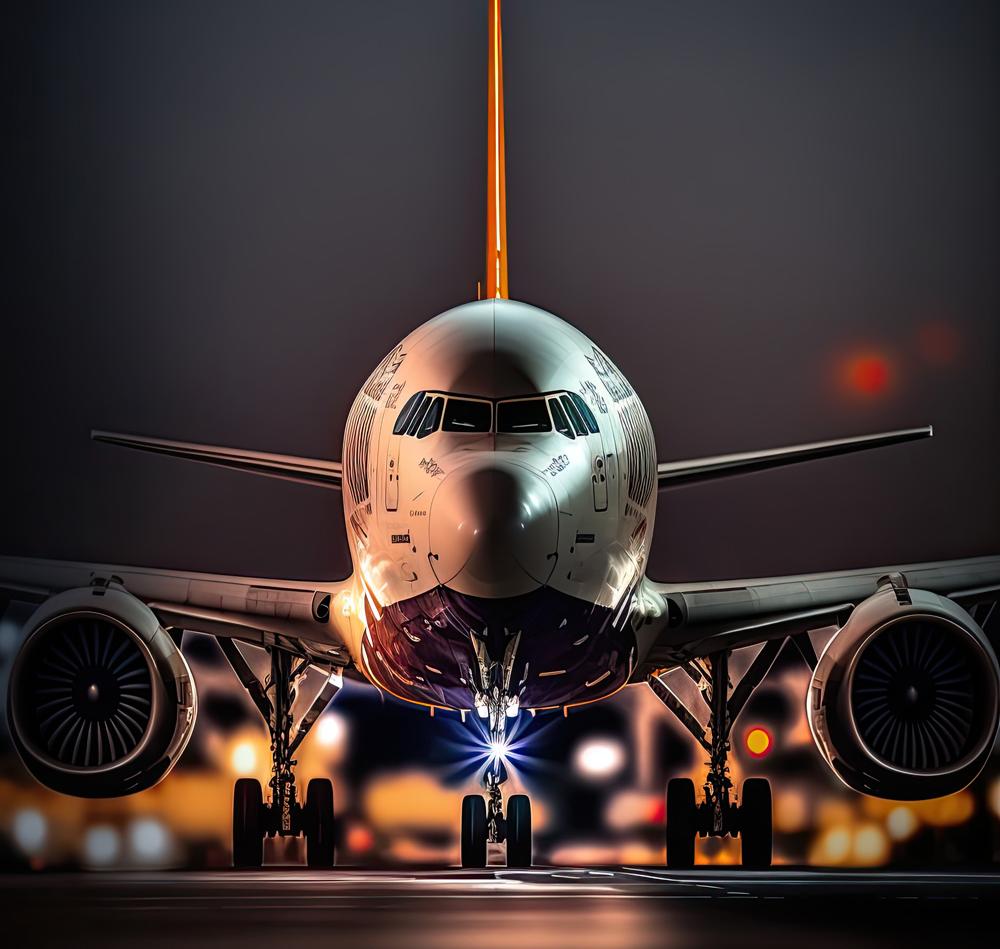
ECMP for avionics
The avionics industry is largely dependent on commercial-off-the-shelf (COTS) electronic components, which are designed and produced for other markets, such as consumer electronics, telecommunications, etc. The aerospace industry must therefore define its own processes to assure that the COTS parts used in avionics systems will be reliable.
To address this issue, IEC Technical Committee 107 has published IEC 62239-1 and IEC TS 62239-2, which describe processes that avionics manufacturers must document in electronic component management plans, in order to use COTS electronic components successfully in aerospace applications. Plans that are certified as compliant with IEC 62239-1 and IEC TS 62239-2 are accepted as evidence by aerospace customers, i.e., platform integrators, regulatory agencies, and operators, that the avionics manufacturer is able to use COTS electronic components successfully in avionics applications. A number of aerospace integrators and operators are participating in this activity.
IECQ offers third-party assessment and certification of compliance with IEC 62239-1 and IEC TS 62239-2.
New challenges for aviation electronics
The IEC is now tackling the effects on electronics of atmospheric radiation and beginning to look at the consequences for aerospace of a worldwide move to lead-free electronic components.
If one aspect of recent developments in electronics is axiomatic, it is probable that the pace of component and product development seems constantly to be on the increase. Particularly in the field of commercial and consumer electronics, the past 10-15 years have seen the introduction of new materials and technologies no longer developed on the back of military and aerospace programmes as was earlier the norm.
This trend has fueled massive device and system performance increases accompanied by, among other things, a huge expansion in commercial markets, new price pressures as well as unit cost reductions, and a considerable shortening of product life cycles. It is also bringing about fundamental changes in the way that some sectors of industry - from electronics purchasers and major integrators back down the supply chain to system, product, and device manufacturers - do business with each other and with their customers.


Lloyd Condra
Lloyd Condra is a senior member of the technical staff at DfR Solutions. He previously worked as a Technical Fellow at Boeing Phantom Works, Boeing's advanced research and development unit, in Seattle, Washington, USA. He was the first Chair of IEC TC 107: Process management for avionics, established in September 2000 after initial work had been carried out in an avionics working group within IECQ.
Perhaps 20 percent of the cost of a new commercial aircraft, and more in the case of many military aircraft, is represented by electronics - anything from flight controls, navigation, landing and communication systems to engine and environmental control systems, visual and other sensors, weapons, electronic protection systems and more. Because of evolution in the broader electronics sector generally, the aerospace industry is now facing some new issues. These include the management of product obsolescence, mitigation of the effects on avionics of atmospheric radiation, and responding to what over the next few years could effectively be a worldwide legislative ban on lead and other hazardous materials in all electronic devices."
All this comes in the context of the relentless pressure on component costs and performance in high-volume applications such as computers and telecommunications. Aerospace on the other hand, and despite the importance of electronics to all modern aircraft, is a relatively low-volume market. It also has many special requirements, not only for cost and performance but also for safety, ruggedness and, perhaps above all, reliability over life-cycles that are nearly always much longer than in the ground-based electronics world.
"Commercial aircraft," says Condra, "can be in service for at least 20 years, during which time they might get two or three major avionics refits for reasons of modernization or legislative compliance. Some military aircraft can be flying for 50 years or more, with a commensurate number of avionics upgrades. Not only are the 'generation gaps' much wider, the consequences of failure can obviously be much more serious in the harsh aviation environment than in a PC or games console, for example."
"A corollary of this is that the aerospace industry is increasingly dependent on electronic components, equipment and systems designed and manufactured for other industries. Unlike the situation 20 years ago, the aerospace industry now has limited influence on the low end of its supply chain in particular - almost none of the component, device or equipment vendors targets aerospace as a primary market anymore."
Manage the process, not the product
From a standards point of view, "things now move too fast," says Condra, "for avionics purchasers like Boeing, Airbus Industrie or other aircraft manufacturers to manage the electronics products themselves. What we have to do is manage the process by which we, the avionics suppliers, the civil and military regulatory or procurement agencies can all be assured that avionics equipment and systems meet all the cost, performance, safety, durability and reliability requirements of our industry."
It was this logic that resulted in TC 107's development of IEC TS 62239: Preparation of an electronic components management plan, introduced as an IEC Publicly Available Specification (PAS) pre-standard and converted to a Technical Specification in May 2003. IEC TS 62239 is increasingly used in conjunction with the IECQ technique known as Technology Approval (TA), which offers one-time independent process approval for a component manufacturer's total product range, along with periodic audits to ensure continuing compliance.
By requiring manufacturers to install and use IECQ TA, purchasers can now reduce or even eliminate costly, time-consuming appraisals and inspections while maintaining full confidence in the performance and quality of a whole range of component types they are buying from any TA-certified manufacturer, anywhere in the world.
While it is particularly relevant to manufacturers dealing with high-volume, automated and continuous production, TA can in principle be applied to all types of electronic component. Thus in the avionics field, aircraft manufacturers now have the option of requiring TA as the quality assessment part of the Electronic Components Management Plans (ECMPs) they ask their avionics suppliers to abide by.
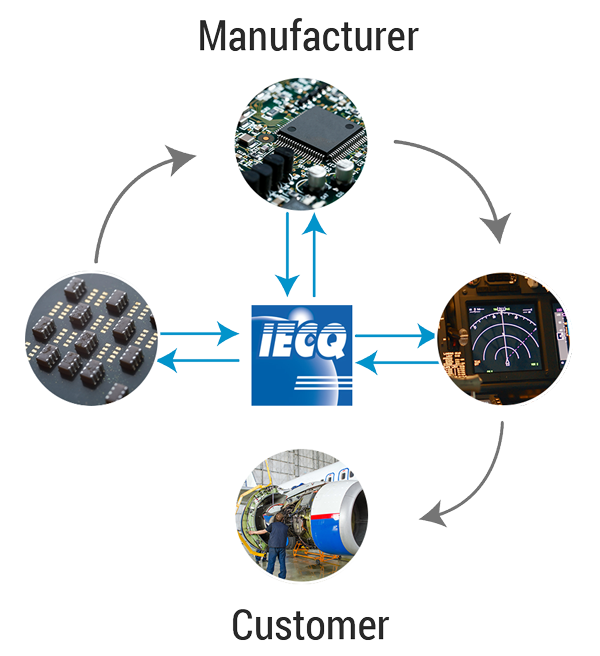
The IECQ-CECC technique known as Technology Approval (TA) uniquely offers independent process approval for a component manufacturer's total product range.
As Condra points out, "ECMPs are useful in both military and commercial aerospace and Boeing, for example, is aiming to use common processes across the board. But this is important not just within one company which happens to be in the USA, where we are now less dependent on the well established but somewhat cumbersome and inflexible military specification (MIL-SPEC) system. The standardized processes need to be based on worldwide industry consensus at a high level, flexible enough for efficient implementation and common for all customers of each OEM (original equipment manufacturer). That is exactly what the IEC 62239/TA combination aims to define."
Cosmic particle radiation
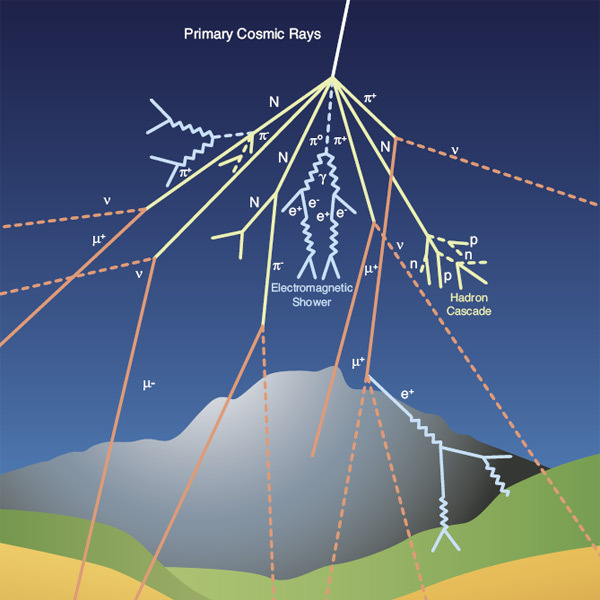
© CERN / Photographer: Lapka, Marzena
The effects on avionics of cosmic particle radiation in the atmosphere have become an increasingly important safety and dependability issue since the first reports of in-flight occurrences in the early 1990s.
So-called Single-Event Effects (SEE) are disturbances in an electronic device caused by a single energetic particle such as a neutron or proton striking a transistor in a memory cell, for example. They can take several forms but most commonly appear as transient pulses in logic or bitflips (changing logic '1' to logic '0' or vice versa) in memory cells. Some effects are only transient but others can cause permanent damage to or even destruction of a device.
SEE are of particular concern to the aerospace/avionics world because the neutron flux, for example, at normal aircraft cruising altitudes can be hundreds of times greater than at sea or ground level, where the vast majority of devices now are expected and designed to function. Furthermore, the continuing trend to smaller, denser, faster and more power-efficient integrated circuits and field-programmable gate arrays (FPGAs) actually increases the devices' susceptibility to SEE. This is because the lower transistor voltages in these newer devices mean that the threshold at which the ionizing field charge from a single energetic particle may cause an error is also lower.
TC 107 has been working on the subject for some time, with experts identifying the atmospheric radiation environment, investigating the nature of SEE on microelectronic devices, refining data on the rate of occurrence and analysing effects on systems. One of the principal aims of the work, which has built on a decade of research and studies by academia and industry consortia as well as individual companies like Boeing, Ericsson Saab Avionics and Rockwell, is to allow integrators of complex systems to include SEE in dependability studies and introduce hardware and software protective measures that ensure flight safety in the natural radiation environment.
As Condra says: "There are still relatively few experts in this previously little understood field, but we are fortunate now to have a good number of them in the IEC community. We are getting close to having a publishable standard in what will be IEC 62396," which could be published by the end of 2005. The publication would be a Technical Specification in the form of general guidelines aimed at accommodating atmospheric radiation effects in avionics. "It may well be that we will subsequently need a more detailed standard," Condra adds.
Avionics going 'green'?
Another aspect of today's electronics industry that is having a growing impact on aerospace is the worldwide move progressively to eliminate toxic materials - lead in particular, still extensively used in coatings and solders - from all electronics.
Japanese, European Union and US legislation on the subject is either on the statute books or pending, and lead-free production is already a reality at least in the commercial sector. It now seems inevitable that, despite some current exceptions for aerospace and military applications, all vendors will in the near future have to switch to lead-free production if they have not already done so - if for no other reason than to remain competitive in the international markets on which they depend.
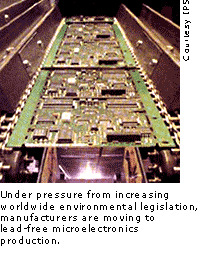
In the longer term it also will become prohibitively expensive to maintain lead and lead-free production in parallel, so specific solutions to the known technical problems associated with 'green' electronics (such as tin whiskers; see below) will have to be found for avionics applications and international standards will be an integral part of the process.
Again, says Condra, the device manufacturers are now outside the aerospace industry, so the real challenge for avionics suppliers is, first, to establish whether 'green' electronics can be produced that meet today's high reliability, safety and other requirements of the aerospace industry. Secondly, manufacturers need to establish whether the alternative materials eventually selected for coatings and solders are indeed less hazardous in the long term than those they are replacing.
For the moment TC 107 does not have a 'green avionics' work item but, as Condra says, "watch this space. There is a great deal of research and testing going on in industry and being coordinated through consortia and industry associations, in particular a working group in the US Aerospace Industries Association (AIA). There is also growing support for fully internationalizing some of the ongoing standards work by extending it into the IEC, so the issue will almost certainly be on the agenda for TC 107's next full meeting, now being planned for the fourth quarter of 2004."
Avionics and the atmospheric radiation environment
Galactic cosmic rays from space, as well as the solar energetic particles that strike the Earth's atmosphere, contain several types of subatomic energetic particles. These collide with air in the atmosphere creating numerous secondary particles and, of these, it is the high-energy secondary neutrons that have the greatest effect on avionics equipment in an aircraft and which can cause permanent damage. The most common effects are caused by a single energetic particle and are called Single-Event Effects (SEE).
The total atmospheric particle flux is a function of the energy in these particles and its variation depends mainly on altitude, reducing by about 300 times almost linearly with decreasing altitude from 40,000 feet (a typical cruising altitude for a long-range airliner) to sea level. The flux also varies with latitude, increasing by a factor of about five when moving from the Equator to the Polar regions.
The simplest form of SEE is an upset caused when a secondary neutron strikes a transistor inside a memory bit cell, for example. The charge created produces a voltage spike that can cause a memory element to change state (a '1' becoming a '0' or vice versa). Such a bitflip can randomly corrupt critical data, randomly change the program or confuse the processor to the point that it crashes, nevertheless leaving the circuit itself undamaged. This sort of upset is called a soft error and normal behavior can be restored by a reset or rewriting of the device.
More serious effects, such as 'latchups' involving high operating current or 'burnouts' of power transistors, can result in loss of device functionality, damage to the power supply or even destruction of the device.
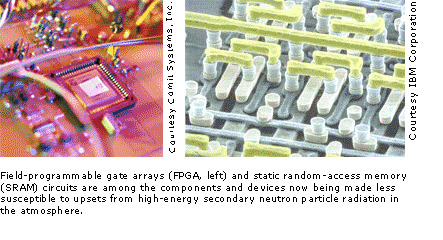
Furthermore, if a secondary neutron strikes a sensitive node within a combinational logic circuit, the voltage disturbance at that node may propagate through the logic, with the most serious consequences if the disturbance reaches the clock or asynchronous input of a number of flip-flops, causing them to register incorrect data. The most sensitive circuits are static and dynamic random-access memories (SRAM and DRAM), together with devices containing such elements, mainly because these contain the largest number of bits susceptible to single-event upsets.
As a result, current microprocessors and microcontrollers are susceptible to SEE from atmospheric radiation at avionics altitudes. While modern avionics system architectures and built-in redundancy largely prevent final effects from being catastrophic as regards the aircraft itself, its passengers or flight crew, avionics manufacturers also are now introducing both hardware and software solutions to better accommodate and/or control SEE at source - the component and device as well as system levels.
Consensus standards will help lead-free avionics get the 'green' light
Before vendors of the high-reliability electronics required in avionics applications can switch from lead-containing materials to lead-free solders, finishes and coatings, many technical questions remain to be answered to satisfy aircraft manufacturers and regulatory authorities.
For example, it is well known that pure-tin plating can grow tiny whiskers that may cause short-circuits in electronics - such tin whiskers have been implicated in many documented failures in aircraft and satellites. So if commercial component vendors switch to lead-free finishes (mainly pure tin), will this result in an unacceptable increase in avionics failures due to tin whisker formation?
What are the effects of small amounts of lead (from intentional or accidental mixing of solders during manufacture or, equally important, repair) on solder reliability? Are the replacement materials environmentally safe?
Among the primary aims of a working group within the US Aerospace Industries Association (AIA), which is acting as a focal point for information exchange within the aerospace industry for the very considerable research efforts under way both in industry and at a number of universities, is to prepare a 'performance' standard for avionics containing lead-free solder.
If, as now seems probable, this standard development work were to be extended into IEC TC 107's work programme, it could eventually provide an international consensus publication allowing avionics customers like Boeing, Airbus Industrie or Embraer to communicate the quality, reliability, repair and maintenance requirements for 'green' avionics to their suppliers, the manufacturers like Rockwell or Thales. As with IEC TS 62239, they would then again be managing the process rather than the products themselves.
